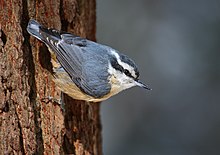Siberian Pines - Part 2: Seed Stratification
In Part 1 of the Siberian Pine series, I wrote about Pinus Sibirica and its value within the Northern permaculture ecosystem.
In this installment I will be writing about how I prepared the seeds for germination.
If you spend any time on the internet looking for information about growing pine nut trees, you will quickly discover that many of these species require some form of cold stratification to mature the seed kernels and trigger germination.
If you research stratification for Pinus Sibirica in particular, you are likely to find all sorts of weird, wonderful, and often conflicting information about how to do this.
So I decided to document the process I followed, in the hope that others may benefit from my success or failure.
I received 200 seeds in the middle of March.
I had contacted the supplier with some concerns that there would not be enough cold stratification time to be able to plant the seedlings in June. They informed me that from their experience only 1 month of cold stratification is needed, and they usually don't even bother with that. Without any seed treatment the supplier reported they get roughly a 50% germination rate.
The seeds came with instructions about how to cold stratify them, but they were a little vague, and of course conflicted with the other online info.
My conclusion from this research is that the cold stratification protocol is a reasonably flexible one, and it usually starts with soaking the seeds, which I did using filtered water. I also decided to ignore the warm stratification advocated by the likes of Rhora's because the majority of stratification protocols I found for Pinus Sibirica did not mention it.
During my research I read something about the seeds that sink during the soaking process being more viable than the seeds that float. I also immediately noticed that when I poured the seeds into the water, they all floated. Not a great start...
My research also suggested soaking times ranging from hours to days. I decided to soak them for 8 hours and see how things progressed.
8 hours later maybe 5 seeds had sunk to the bottom of the container, and the water was stained brown from the pine residue / resin. So I drained the water off, let the seeds sit for half an hour or so, and then put them back on to soak overnight in fresh water.
The next morning a few more had sunk, and so I repeated the process from the day before - letting them sit for half an hour, and then soaking them in fresh clean water for another 8 to 12 hours.
My thinking around the seeds sinking is that as the seed coating absorbs water and it infiltrates the seed, the seed becomes heavier, and therefore sinks. Seeds that don't absorb water probably stay dormant which is why there is a lower germination rate. Anyway, time will tell and we shall see...
36 hours after putting the seeds into soak and roughly half of my seeds have sunk to the bottom of the container. It's beginning to appear that all the floating seeds at the beginning was a false alarm.
3 days soaking in water, and changing it every 8-12 hours and my seeds are ready for cold stratification. 156 seeds had sunk to the bottom, leaving 44 floaters which is roughly 25%.
I chose perlite to stratify the seeds in simply because I happen to have some handy.
I decided to perform two different cold stratification protocols to see which one is better. And I kept the floating seeds separate from the sunken seeds to see if they responded differently.
The first one will be my control, where half the seeds are placed in a plastic bag with vermiculite and simply placed in the refrigerator for 10 weeks.
The remaining seeds were placed in a different bag containing vermiculite, and will be subjected to the following:
- 2 weeks in the refrigerator
- 2 weeks in the freezer
- 4 weeks alternating between the refrigerator and freezer every other day
- 2 weeks in the refrigerator
What I am attempting to do is replicate the freeze / thaw cycle that these seeds would naturally experience as spring arrives. Anyone who has made maple syrup knows that this time of the year is when the first signs of life get kicked into gear as the phase transition cycle drives the sap out of the roots and into the upper branches of the trees.
This phase transition cycle of water inside the seed will also create a slow pulsing pressure upon the outer shell from the inside. As the moisture inside the seed freezes, it expands pushing out upon the seed casing. Then as it thaws it contracts, releasing the pressure, and drawing a little more moisture into the seed via capillary action. As this cycle repeats, I think that it will weaken the tough outer casing so that the seedling may successfully emerge.
This research study from 1925 on white pine seeds indicates that this protocol might indeed prove effective at increasing germination rates.




















































